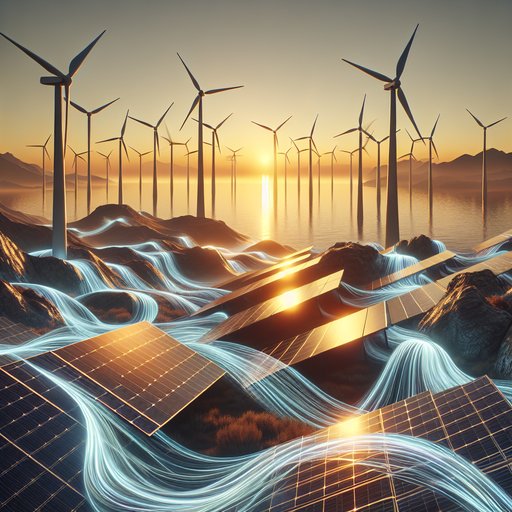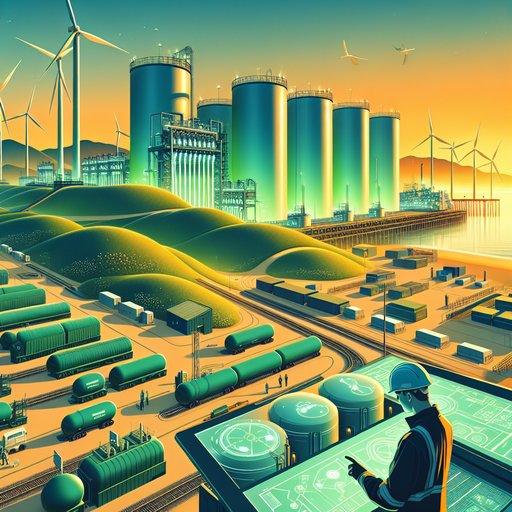
By the time the street wakes, the work has already begun. New solar skins go up before the day turns harsh, offshore towers pivot to meet a shifting sea, and a rig in the desert listens to the earth’s pulse. Breakthroughs in solar, wind, and geothermal now arrive not as distant promises but as systems finding their rhythm under real weather, real budgets, and real scrutiny. What’s changing isn’t just the technology—the chemistry in a thin film, the diameter of a rotor, the geometry of a fracture—but the choreography among them. The new grid doesn’t wait for one miracle; it stitches together many smaller ones, letting electrons flow from glass and gale and granite with less friction than yesterday. And across rooftops, harbors, and scrubland, you can feel the shape of that future settling into place.
On a Phoenix rooftop, a technician kneels over a panel that looks more like tinted glass than a traditional module, the early sun sliding without glare across its surface. The panel is a stack of two semiconductors, one of them a perovskite layer that drinks in colors silicon often misses. It’s not a lab cell under a microscope but a meter-wide unit, its edges sealed clean, its cables tucked under the mounting rail. Heat radiates from the tar and the air already smells like noon, but the panel holds its output in a way its predecessors never did.
The promise was clear when tandem efficiencies passed thirty percent under careful lights; the breakthrough is that these sheets now shrug off a week of rooftop punishment without drifting off spec. Inside a low-slung building not far away, the perovskite is made by the kilometer. A roll of polymer unwinds into a canyon of machines, where ink nozzles sweep back and forth like an unseen loom. The liquid is a complicated soup—salts and solvents and a whisper of additives—laid down in a film so thin it looks imaginary until the drying lamps flash.
A few years ago, this film would brown, bubble, or decay at the edges like a soiled map. Now it is orderly and stubborn, the halides corralled, the grain boundaries pacified, the encapsulation finally worthy of weather. Engineers watch spectral curves trace across a monitor, uninterested in miracles and fixated on repeatability, the dull magic required for banks and building codes to trust. Offshore, a ship the size of a stadium cranes a nacelle into the air as if hoisting a moon.
The hub waits for blades as long as downtown blocks, each one sculpted to cut whispers out of the wind. A technician in a high-vis jacket checks a tablet showing a digital twin of the turbine, the model already learning how this machine will flex under a northeasterly and how it should yaw when gusts stack. In the nacelle, the generator’s magnets sit in a circle that makes your teeth ache if you stand too close, and in the tower, fiber optics listen for the first hint of fatigue. The crew speaks in short phrases over the throat mic; the sea answers with a low cough.
At first spin, the cascade begins: just a few kilowatts, then a sweep of power that you feel in your chest. From shore, the new towers don’t look unanimous. Some are pinned in shallow banks, their foundations hammered into sand; beyond them, farther than the eye admits, floaters hold fast on lines that trace down to anchors sunk like commas in the seafloor. Fishermen in small boats thread those lines with muscle memory, because the consultation meetings weren’t just for signatures; they redrew lanes, set seasons, and left gaps where the trawls still pass.
The turbines throw long shadows at sunset and a longer shadow on the supply chain: a port retooled for blade laydown, a welding school back at capacity, a tip-up yard testing composites that resist the salt’s quiet hammer. When the wind slackens, the control room shifts pitch angles by fractions, chasing laminar flow the way a violinist hunts the center of a note. In the Utah desert at dawn, the geothermal site looks nothing like a postcard of geysers. There’s a rig, yes, but the flare is water vapor, not flame, and the noise is a polite thunder you feel under your boots.
Two wells run horizontal through hot rock, their tracks mapped in thin white lines on a screen in the trailer; fiber optics thread the wells, reading temperature and strain with the sensitivity of a stethoscope. A pump sends water down one well; it returns up the other, hotter by design, its path carved through fractures made on purpose where the rock wanted to split anyway. A small building turns that heat into power without the drama of a boiler, the output steady in a way that solar at noon could envy. On a graph of the grid, it shows up as a line that doesn’t move much, and that steadiness is the point.
Operators here borrowed tricks from shale fields—steerable drilling, microseismic monitoring—and left behind the boomtown flare. In a second trailer, a map of tiny earthquakes blooms and fades as the formation answers the stimulation, a blur of crumbs that reassure the permitting office: yes, the rock speaks, but it speaks quietly. Down the road, an old oil well is being repurposed for a closed-loop test, coaxing warmth without touching the deeper aquifers, a geometry that keeps the water in a circuit of its own. A maintenance lead walks past racks of heat exchangers and points to a truck pulling in with parts stamped from a factory three states away.
The workforce that laughed at the idea of swapping rigs for loops stops laughing when they realize the wrenches fit. Back in town, the grid operator’s wall is a mosaic of present tense. Midday brings a green swell as rooftops and warehouse awnings flood feeders with solar, then the offshore wind wakes up as the land cools, smoothing the evening shoulder. Geothermal hums underneath, a bass line that doesn’t care whether clouds stack or a front arrives early.
Software shifts loads with the attention of a maître d’: a bank of freezers pre-chills because it knows a lull is coming, a neighborhood battery absorbs a gust that would have spilled, and an industrial electrolyzer takes a bite out of surplus until pipelines stop hissing. It looks like orchestration, but it feels like giving the system more levers to pull when weather throws a new rhythm. The result isn’t absence of intermittency; it’s a kind of practiced grace. Not every lever is mechanical.
In a neighborhood where the roofs skew flat and the utility bills pinch, the new solar skins hide in plain sight—carports over playgrounds, awnings that turn shade into wattage, strips on walls that tolerate graffiti better than glare. A school’s bill drops enough to fund a librarian full-time, and the librarian keeps the room open late because the air runs cooler now. Out at the harbor, fishermen who opposed the first survey lines cash checks from a community share in the wind farm, a guarantee negotiated as stubbornly as any cable route. On the reservation beside the geothermal field, a district system pipes steady heat into elders’ homes, cutting the cost of winter and the smell of smoke.
Training programs fold in without fanfare: welders requalify for different alloys, roofers learn new adhesives, drillers learn to read strain rather than pressure alone. There are edges left to sand. Perovskites still ask for better encapsulation if roofs promise decades, and end-of-life plans for blades need more than good intentions and a municipal landfill. Birds learn the new skyline at a hard cost unless siting respects flyways, and the permitting clock can stretch beyond an election cycle while storms redraw coastlines faster.
But the distance between the lab and the field has narrowed enough that the problems feel like engineering, policy, and patience, not metaphysics. The old complaint—that breakthroughs never survive first contact with weather—lands softer when you stand where the weather is and watch the machines keep working. In the early light, the Phoenix rooftop is bright enough to sting your eyes, and the tandem panel’s monitor shows a number that would have read like fiction a decade ago. Out at sea, a nacelle hums at a pitch you don’t hear until you lie still, and the floaters nod in conversation with a swell that has crossed an ocean.
The desert turbine hall sounds like a whispering library cataloging heat. Nothing about these scenes guarantees a tidy future, but they add up to a grid that looks less like a single bet and more like a chorus coming into tune. When the technician packs his tools and the fishermen check their lines and the driller wipes dust from her sleeve, the day’s power is already moving, and tomorrow’s has somewhere to go.























































